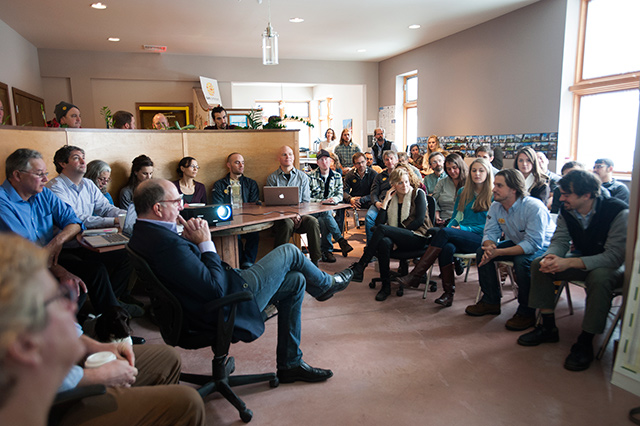Sep
15
2015
By Frank Farnsworth
I was raised in rural upstate New York and saw some of the problems that come with fracking. As a result, I have a great appreciation for alternative, clean, renewable power, like solar power.
My family and I...
Feb
01
2015
by Dan D'Ambrosio, Free Press Staff Writer
WATERBURY –Every Monday morning, the employees of SunCommon cram into a meeting area in the open offices of the solar company's headquarters here and get fired up for the week.
The meeting begins with...
Jan
07
2015
Letter to the Editor: A new working landscape in Vermont
When I moved to Vermont years ago I knew I needed to find a way to affordably heat my Leicester home. At the time fuel oil was my only option but...
Jan
02
2015
Vermonters soak up solar energy
I was excited to read "Smaller renewable power projects up 58 percent in VT" (Nov. 17). The cost of solar has come down so far, and Vermont's thriving solar industry has gotten so efficient, that...
Jan
02
2015
Letter to the Editor: Sitting pretty in sun at age 95
"How do Vermonters heat their homes?" (Dec. 18) gave short shrift to the 186 percent increase in the use of solar energy to keep our homes warm and comfy....
Mar
28
2013
In the Spring of 2012, Shannon and Melissa Haggett saw the story of SunCommon launching on WCAX and were intrigued by the idea of going solar with no upfront cost. Shannon hopped onto his computer, went to our website,...
Jan
09
2013
Don Mayer has been the CEO and Top Dog at Small Dog Electronics since he founded it in 1995. Don’s been involved in the start-up of five different companies in fields as varied as computer software and wind energy,...
Jan
03
2013
Kimberly Ead, her husband Derek, and their daughter Sydney are relatively new members of the Bolton Community. Derek and Kim are truly active people with a climbing wall inside and kayaks in the shed. Kim is especially in tune...
Dec
12
2012
Bill and Judy built their home in Williston 37 years ago and, knowing that installing solar panels was both the environmentally responsible and the economical thing to do, they positioned their home with one side of the roof facing...




